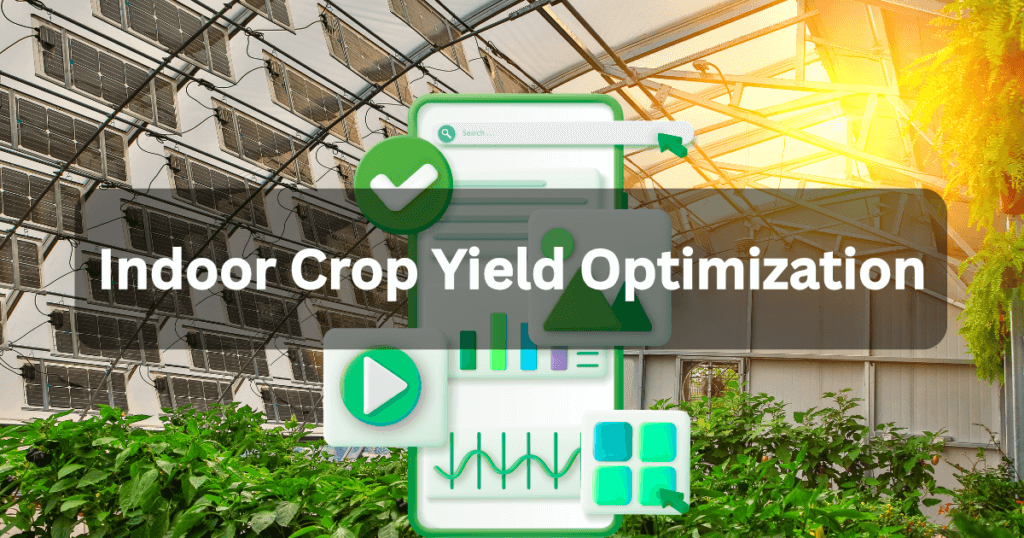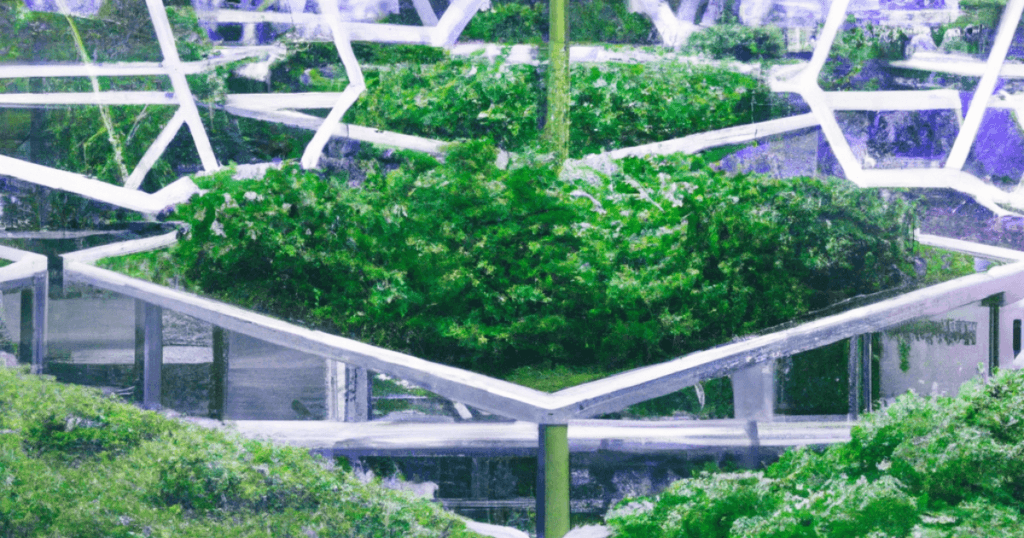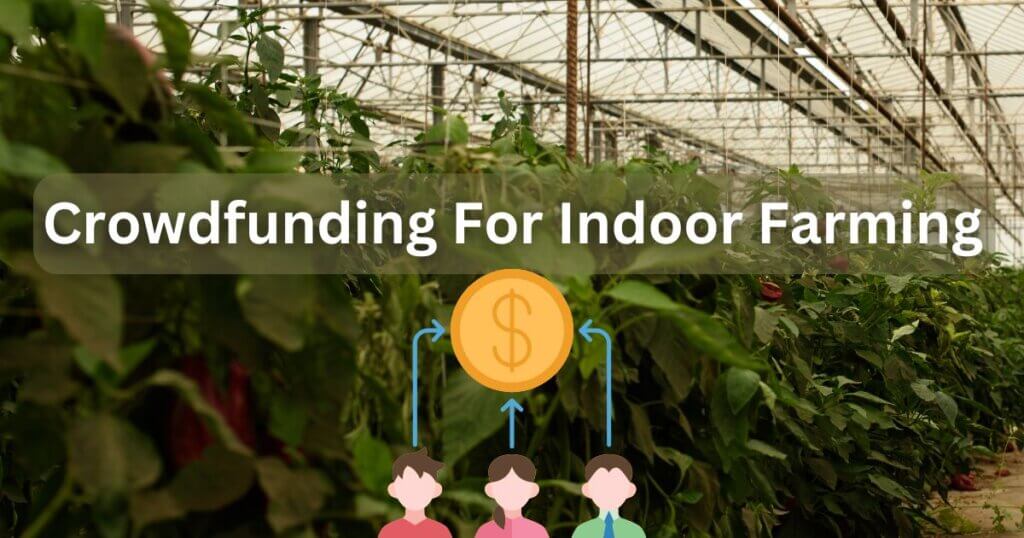Proven Strategies for Indoor Crop Yield Optimization: Boost Harvests by 200%

Some of the links in this post are affiliate links. As an Amazon Associate, we earn a referral fee from qualifying purchases—at no extra cost to you.
Table of Contents
Understanding Indoor Crop Yield Optimization
What Is Indoor Crop Yield Optimization?
Indoor crop yield optimization refers to the science and practice of maximizing the productivity of crops grown in controlled environments. This can include vertical farms, hydroponic greenhouses, indoor plant factories, or even grow tents in urban apartments. The goal is to tweak every variable—light, temperature, nutrients, humidity, and CO₂ levels—to create the perfect conditions for plants to thrive. Unlike traditional farming, you’re not at the mercy of the weather, pests, or soil conditions. Instead, it’s about precision. And when done right, indoor crop yield optimization can result in 2x to 3x the harvests compared to outdoor setups.
Why It Matters More Than Ever in 2025
With global population surging and arable land shrinking, the demand for food is skyrocketing. Climate change is only making matters worse. Enter indoor farming. It’s not just a trend—it’s the future. Whether you’re running a commercial operation or growing leafy greens in your spare room, optimizing your indoor yield helps you grow more with less. In an era where every square foot counts, efficiency is king. That’s why indoor crop yield optimization isn’t just helpful—it’s essential.
Common Misconceptions About Indoor Farming Yields
A lot of people assume indoor farming always results in higher yields. That’s not entirely true. Without proper optimization, indoor crops can suffer from poor lighting, inconsistent watering, and nutrient imbalances. Another myth? That only expensive gear leads to success. In reality, knowledge and consistency often outperform gadgets. Understanding how your crop responds to various conditions is far more powerful than simply upgrading your setup.
Key Factors That Influence Indoor Crop Yields
Light Spectrum and Intensity
Light is arguably the most critical factor in indoor crop yield optimization. Plants use photosynthetically active radiation (PAR) to grow, and not all lights deliver this effectively. The right spectrum, intensity, and duration can dramatically influence flowering, fruiting, and leaf development. Blue light encourages vegetative growth, while red light promotes flowering. Balancing both is crucial.
For growers looking to optimize their lighting setup, the VIPARSPECTRA XS2000 LED Grow Light offers a powerful full-spectrum output with adjustable intensity, making it ideal for maximizing yield during every growth phase.
LED vs. HPS: Which Boosts Yield Better?
High-Pressure Sodium (HPS) lights have long been used for their powerful red output, great for fruiting. But LEDs have taken over the indoor farming world thanks to their efficiency, low heat output, and customizability. Modern LED systems allow growers to tailor light wavelengths and intensity throughout a plant’s growth cycle. While HPS can still produce solid yields, optimized LED systems often lead to faster growth and up to 30% higher yields.
Temperature and Humidity Control
Plants thrive in stable environments. Too cold, and growth slows. Too hot, and you risk burning leaves or encouraging mold. Generally, a temperature range of 70–85°F (21–29°C) is ideal. Humidity levels should align with the growth stage—higher during seedling stages and lower during flowering. Using a digital thermo-hygrometer helps monitor and maintain the ideal conditions 24/7.
A popular option like the Govee WiFi Thermometer Hygrometer gives real-time alerts and tracks data through a mobile app—perfect for staying in control 24/7.
Nutrient Management and Hydroponic Systems
Crops need nitrogen, phosphorus, potassium, and trace minerals to grow optimally. In soil-based systems, nutrients can vary wildly. Hydroponics offers precise control over what plants absorb. Using a high-quality nutrient solution and adjusting the pH between 5.5 and 6.5 ensures plants absorb everything efficiently. Regularly flush your system to prevent nutrient lockout.
Role of CO₂ Enrichment in Plant Growth
Did you know increasing CO₂ levels can supercharge plant growth? When plants have more carbon dioxide available, they photosynthesize faster, producing more energy. Enriching your grow space with 800–1200 ppm CO₂ can boost yields by up to 20%, especially under high light conditions. Just remember, good ventilation is key to avoid CO₂ buildup beyond safe levels.
For easy enrichment, the TNB Naturals CO2 Canister provides a cost-effective and refillable solution—great for hobbyists and small-scale operations.
Advanced Techniques for Indoor Crop Yield Optimization
Vertical Farming and Layered Growing Systems
Maximize space by going vertical. Stacking shelves of plants under their own dedicated light sources is a game-changer. You can grow 3–5x more crops in the same footprint. Leafy greens, microgreens, and herbs do exceptionally well in these setups. Vertical farming is ideal for small apartments, commercial grow rooms, and urban greenhouses.
Precision Irrigation and Water Recycling
Overwatering kills more indoor crops than pests ever could. Precision irrigation—like drip systems and ebb-and-flow setups—ensures just the right amount of water reaches the roots. Pair this with a water reclamation system to reduce waste and cost. Use sensors to monitor soil or substrate moisture and automate watering cycles.
A system like the Blumat Automatic Watering Kit uses ceramic sensors to deliver water only when needed—minimizing waste and maximizing plant health.
Using AI and Sensors to Track Growth Data
Tech-savvy growers are now using AI and IoT sensors to track growth metrics in real-time. These tools monitor light, pH, EC, moisture, and even plant health through machine vision. With AI-based recommendations, growers can tweak their environment on the fly to prevent problems and push growth. It’s like having a plant coach on duty 24/7.
Devices like the GrowHub Smart Grow Controller integrate sensors and automation, giving you AI-level environmental control without the steep learning curve.
Aeroponics and Its Yield-Enhancing Benefits
In aeroponics, roots hang in the air and are misted with a nutrient-rich solution. This method delivers oxygen directly to the roots while reducing water usage by up to 90%. Since there’s no soil or media, there’s zero risk of soil-borne disease. Crops like lettuce and strawberries grow incredibly fast with aeroponic methods, often outperforming hydroponic systems in yield and speed.
Best Practices for Lighting and Photoperiod
Optimal Light Schedules for Popular Indoor Crops
Plants need a balance of light and dark to thrive. Leafy greens like spinach and lettuce do well with 16–18 hours of light. Fruiting crops like tomatoes and peppers require 14–16 hours of intense light. Keep a strict light-dark cycle—interruptions can stress plants and lower yield. Using a programmable timer helps automate the process.
Avoiding Common Lighting Mistakes
Too much light can bleach leaves; too little, and your plants stretch and weaken. Avoid placing lights too close or too far from the canopy. Maintain consistent coverage and avoid dark zones. Also, make sure your light spectrum matches the plant’s growth stage. Many growers make the mistake of using vegetative lighting during flowering, which stunts productivity.
Soil vs. Soilless Growing: Which Produces Higher Yields?
Benefits of Hydroponics and Aquaponics
Hydroponics and aquaponics remove the guesswork of soil inconsistencies. These systems allow precise control over nutrients, pH, and moisture. Hydroponics generally yields faster-growing plants with 20–30% more productivity. Aquaponics adds fish to the equation—using their waste to feed plants organically. While setup can be complex, yields are consistent and sustainable.
Organic Indoor Farming Yields Compared
Organic farming indoors is possible—and surprisingly productive. While yields may be slightly lower than hydroponic systems, the benefits include healthier plants, chemical-free produce, and a strong appeal to eco-conscious consumers. Using compost teas, organic amendments, and worm castings can optimize soil fertility naturally.
Crop Selection for Maximum Yield in Indoor Systems
High-Yield Crops Ideal for Indoor Farms
Not all crops are created equal indoors. If you want maximum yield, focus on:
- Lettuce
- Kale
- Basil
- Strawberries
- Tomatoes
- Spinach
- Microgreens
These crops grow quickly, require minimal space, and respond well to artificial lighting. High-value herbs like mint and cilantro are also great return-on-investment choices.
Companion Planting for Better Productivity
Strategic pairing of crops—like basil with tomatoes—can improve growth rates and deter pests. Companion planting enhances biodiversity, boosts nutrient use efficiency, and reduces the need for pesticides. It’s a simple, natural way to optimize indoor crop yield without any extra gear.
Troubleshooting Yield Problems in Indoor Farms
Diagnosing Nutrient Deficiencies
Yellowing leaves? Purple stems? Curling tips? These are signs your plant lacks essential nutrients. Use a nutrient deficiency chart to identify issues early. Regular water testing and maintaining a nutrient feeding schedule can prevent these problems altogether. And remember—more isn’t always better. Overfeeding can cause salt buildup and nutrient lockout.
Preventing and Managing Pests and Mold
Indoor farms aren’t immune to pests. Spider mites, aphids, and fungus gnats can still find their way in. Use neem oil, sticky traps, and beneficial insects like ladybugs for organic pest control. Ensure airflow is good to prevent mold and mildew. Dehumidifiers and oscillating fans help keep things dry and mold-free.
An affordable prevention method is using Yellow Sticky Traps, which attract and trap gnats, aphids, and other common indoor pests.
Case Studies: Real Results of Indoor Crop Yield Optimization
How One Urban Farm Increased Yields by 250%
In Chicago, a vertical farm used LED automation and AI monitoring to increase lettuce yields by 250% within one year. By tweaking their light cycles, using CO₂ enrichment, and switching to aeroponics, they turned a struggling grow room into a high-output urban oasis. Their success is now used as a benchmark for scalable city farming.
Indoor Farming in Small Spaces: A Success Story
In a 300 sq ft Brooklyn apartment, a hobby grower used stackable hydroponic towers and smart lighting to produce over 10 pounds of food monthly. This DIY success proves you don’t need acres or industrial setups to benefit from indoor crop yield optimization. Just smart design and consistency.
Future Trends in Indoor Crop Yield Optimization
Smart Greenhouses and IoT Farming
Tomorrow’s farms are here today. Smart greenhouses now use real-time sensors and mobile dashboards to control irrigation, lighting, and ventilation remotely. These setups detect issues before they become problems and adjust conditions automatically. The result? Less waste, more yield, and 24/7 peace of mind.
CRISPR and Genetically Enhanced Indoor Crops
Gene editing with CRISPR is opening doors to crops that grow faster, resist disease, and require less light. Scientists are developing lettuce and spinach varieties specifically for indoor environments. These enhanced crops optimize energy use and dramatically reduce the time from seed to harvest.
Conclusion: Grow More with Less—Start Optimizing Today!
Indoor crop yield optimization isn’t a secret—it’s a science. With the right tools, knowledge, and a dash of curiosity, anyone can grow more food in less space. Whether you’re a commercial grower or a balcony botanist, fine-tuning your setup can unlock impressive yields. From lighting and nutrients to AI monitoring and crop selection, every decision matters. Start small, experiment boldly, and let your indoor garden thrive like never before.
FAQs – Indoor Crop Yield Optimization
1. How often should I rotate crops in an indoor farming setup to maintain high yields?
Even indoors, rotating crops helps prevent disease buildup, balances nutrient use, and keeps systems running efficiently. Try rotating plant families every few growing cycles for best results.
2. Can companion planting still work effectively in vertical or hydroponic setups?
Yes, it can. In hydroponic or vertical systems, you can pair crops that benefit each other without competing too much for space or nutrients, like basil with lettuce or mint with strawberries.
3. What role does airflow play in optimizing crop yields indoors?
Airflow strengthens stems, prevents mold, and distributes CO₂ and humidity evenly. Using fans or ventilation systems helps maintain a stable environment that promotes steady plant growth.
4. Are there specific pollination strategies needed for fruiting crops indoors?
Yes. Since there’s no natural wind or insects, indoor growers often hand-pollinate or use vibrating tools to help fruiting plants like tomatoes or peppers set fruit properly.
5. How do light leaks during dark cycles affect crop yield?
Light leaks can confuse plants during their flowering phase, causing stress and reduced yield. Keeping the grow area completely dark during off-hours is crucial for healthy development.
Other Useful Resources Related To Indoor Crop Yield Optimization
- Montel Inc. – 3 Ways to Maximize Yield in Indoor Farming
This article explores strategies to enhance indoor farming yields, focusing on space optimization through vertical racking systems, effective LED lighting techniques, and integrated environmental controls. It provides practical insights for growers aiming to maximize their indoor crop production.
🔗 https://www.montel.com/blog/3-ways-to-maximize-yield-in-indoor-farming - PNAS – Wheat Yield Potential in Controlled-Environment Vertical Farms
A scientific study analyzing the potential of vertical farming to dramatically increase wheat yields. It discusses how controlled environments can lead to yields several hundred times higher than traditional farming, highlighting the possibilities and challenges of indoor cereal production.
🔗 https://www.pnas.org/doi/10.1073/pnas.2002655117 - RedBud Software – Using Indoor Farming Software to Improve Yield and Efficiency
This resource discusses how AI-driven software solutions can optimize various aspects of indoor farming, including climate control, lighting schedules, and nutrient delivery. It emphasizes the role of technology in enhancing crop yields and operational efficiency.
🔗 https://redbudsaas.com/blog/indoor-farming-software-improve-yield-and-efficiency/ - MDPI – Optimizing Crop Yield and Reducing Energy Consumption in Greenhouse Control Using PSO-MPC Algorithm
This academic paper presents a model predictive control algorithm optimized with particle swarm optimization to regulate greenhouse environments. It demonstrates how advanced control strategies can simultaneously maximize crop yield and minimize energy consumption.
🔗 https://www.mdpi.com/1999-4893/16/5/243 - PetiolePro – Advancements in Plant Breeding for Indoor Vertical Farming
An insightful article on how targeted plant breeding and genetic modifications can enhance traits like yield, growth rate, and light efficiency in crops, specifically tailored for indoor vertical farming systems.
🔗 https://www.petiolepro.com/blog/advancements-in-plant-breeding-for-indoor-vertical-farming/









